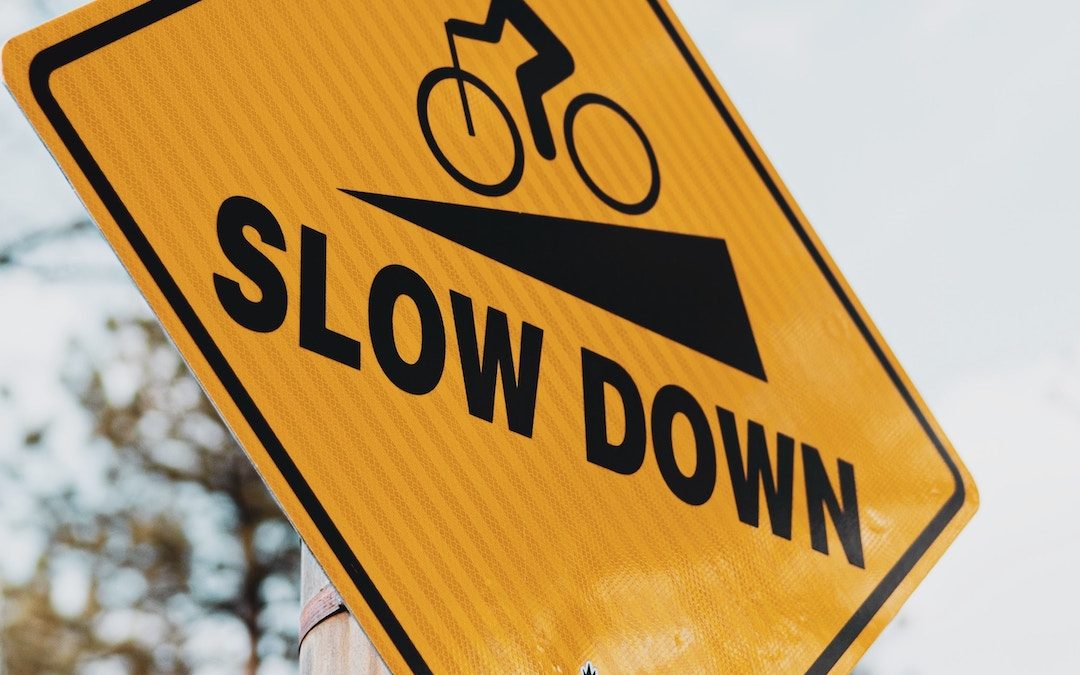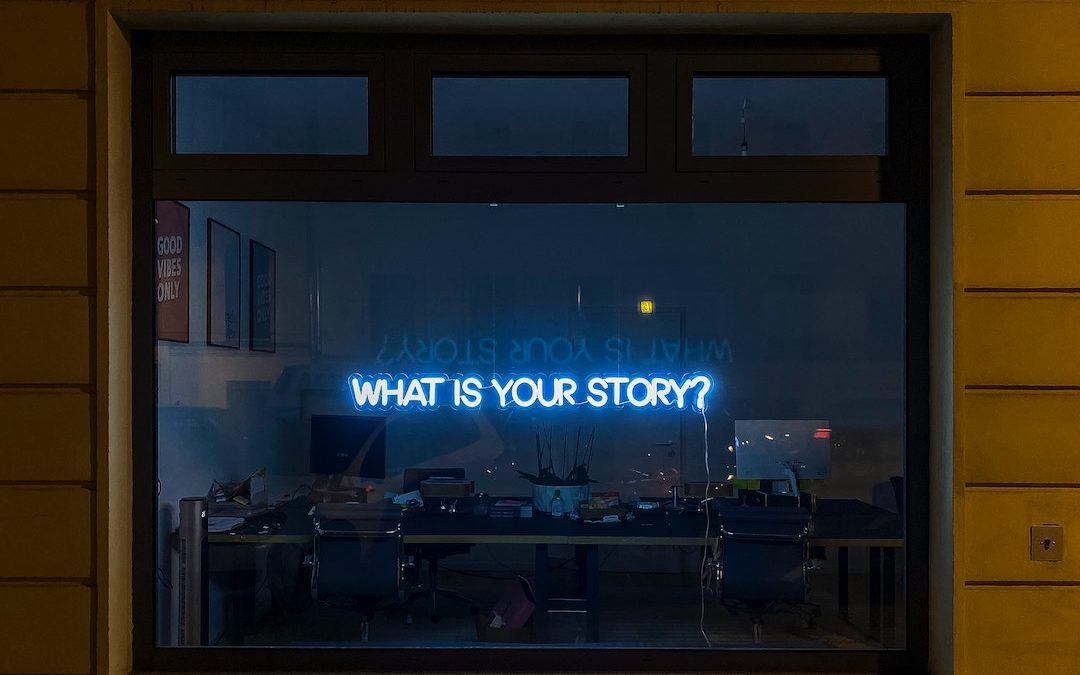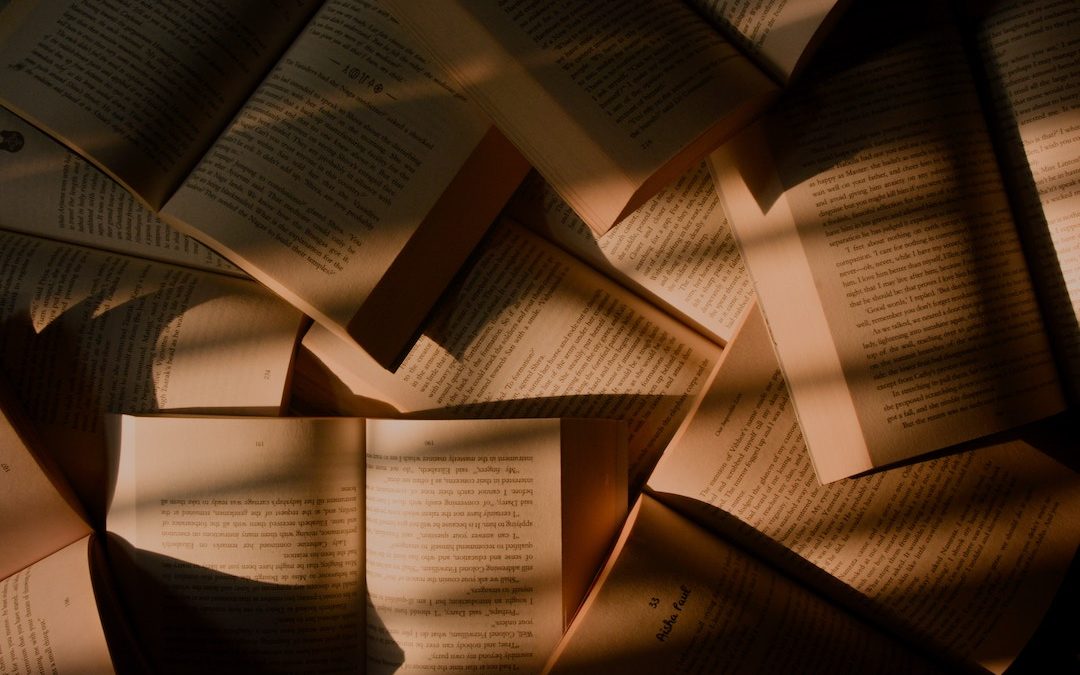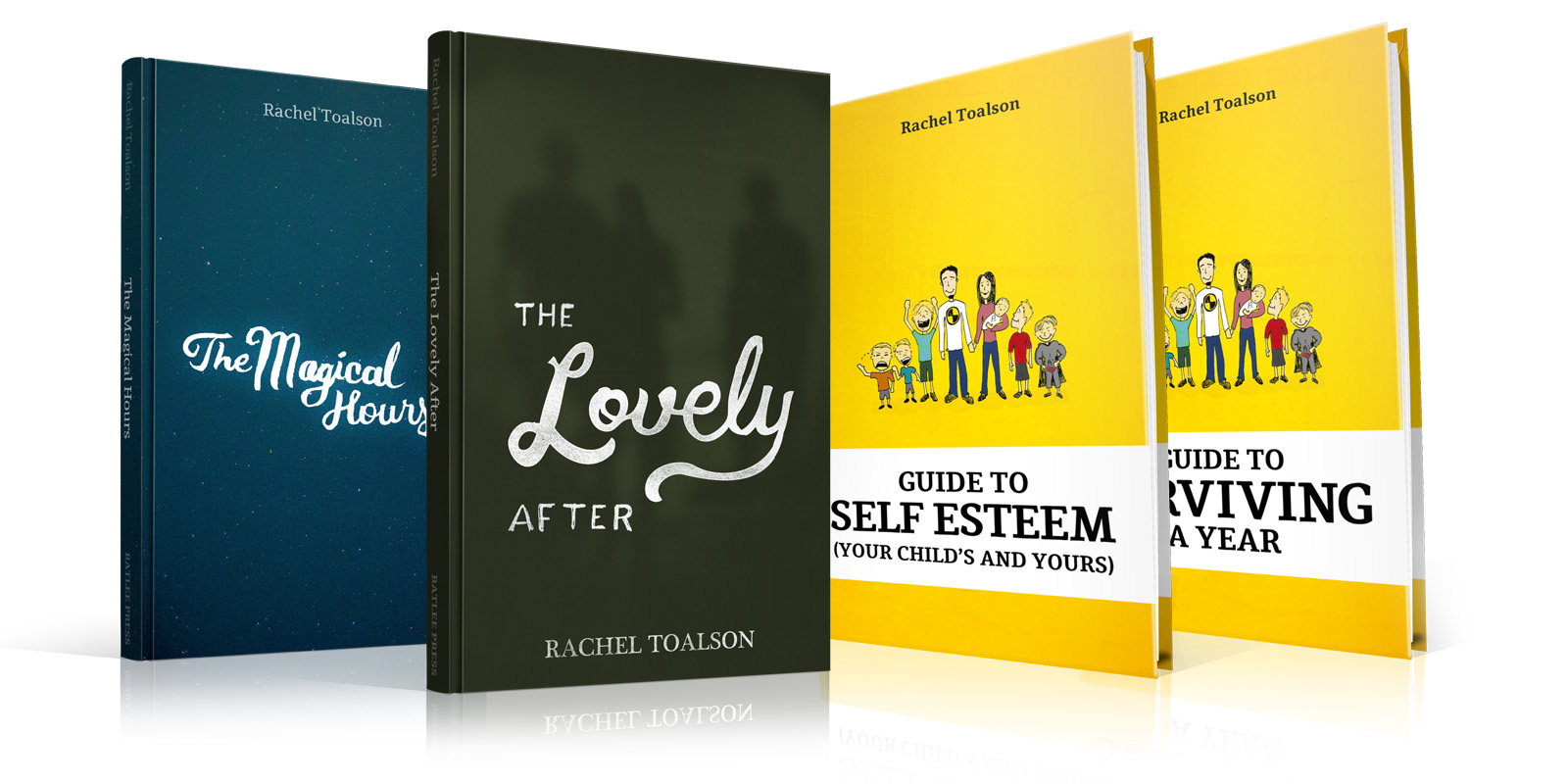
by Rachel Toalson | Wing Chair Musings
Schwipp schwipp schwipp schwipp schwipp bang!
That seems to be all I hear in the early mornings anymore. Either that or talk about solving times, brands of cubes, or Max Park’s new 3x3x3 record of 3.13 seconds.
I have a son who is currently obsessed with Rubik’s cubes and becoming a speed cuber.
He’s had a lot of obsessions over the years, some that stuck around, some that didn’t. He’s a talented kid. His biggest challenge will probably be deciding which thing to focus on, instead of all the things.
I’ve been thinking about him a lot—not just because he’s usually already sitting at the kitchen table solving Rubik’s cubes when I get back from my morning runs (and he’s a teenager; aren’t teenagers supposed to sleep the days away during the summer?). But also because I sometimes find myself thinking, If he spent as much time studying and practicing music and acting—which he says he wants to do as a career—as he does on Rubik’s cubes, he’d pull way ahead of the rest.
But that’s not my decision. I’m not him. I’m just a parent. Who am I to say whether the direction he’s heading is the right one or the wrong one?
And this obsession with Rubik’s cubes is teaching him something valuable—that it takes time to get where you want to be.
Most of us want to get somewhere fast. We have our dreams and we have our plans and we want them to be in our hands already!
But the world has its own timetable.
There are few careers better at proving this than a writing career.
It’s a career of slow. A career of waiting. We become professional waiters—and not the kind who get tips.
Everything about it takes such a long time. Finishing the first draft of a book. Finishing the eighth or twelfth or the nineteen other drafts of that same book before I let it out of my hands. Finding an agent. Finding an editor. Actually publishing a book.
So…slow.
I often find myself thinking, I need something to happen. I need this contract to come through, this character to tell me what in the world she has in mind, someone to return my email.
As Mo Willems once titled one of my favorite Elephant & Piggie books: “Waiting Is Not Easy.”
There’s a well known piece of advice in the running world: Run slow to run fast. It reminds me of something I recently read from Simon Sinek, a British American writer and speaker: “It’s better to go slow in the right direction than go fast in the wrong direction.”
Sinek doesn’t say anything about it being easier to go slow in the right direction, only that it’s better. (Did you notice that, too?)
And on my good days, I believe it is.
Because if I run fast every single day I go out for a run, my body will exist in depletion mode. My energy levels will fall to practically nonexistent. I will burn out as quickly as a firework. And I’ll risk injury, too.
What going slow does is it allows us time and opportunity to prepare ourselves for what’s waiting for us farther along that journey. When I run slow to run fast, I’m building the proper muscles and lung capacity and cadence to run my race. So when I stand at the starting line and the gun goes off, I’m ready to give it my all.
We have to put in the work. And we definitely have to move in the right direction, not the wrong direction—however slow our progress may be.
Now, I know some people have fast passes to the top. And they do just fine. And we may look at that and think it’s not fair. And it’s not. But it’s also not our journey. It may never be our journey. We may never make it to the top—whatever the top may be (because it’s never a literal top, at least not for me. It’s more like, bestseller, awards, beloved by all…).
“What will you do if you never make a bestseller list?” my husband asks me. “Or you never win the Newbery award?” (That’s been my dream since I was 11 and I read every Newbery winner since the award was established. Someday I’ll write one of these books, I said to myself.)
He wasn’t done. “What if you never get any more well known than you are today?”
I cringe just writing those questions down. Because my first thought is, I’ll keep trying, then. And my second thought is, Will I?
If ten years pass and nothing changes, will I?
If twenty years pass and nothing changes, will I?
If thirty years…will I?
Go slow in the right direction…
But how slow are we talking about?
Preparation, I remind myself. It’s all preparation. And without preparation, we won’t last very long in the game. We may not be completely ready. We might be thrown into something completely unknown.
I’m not saying preparation can protect us from every unknown. Of course not. Life is hardly ever predictable. But preparation can help us plan for some unknowns. A second pair of shoes on race day, in case the first ones randomly split. An extra journal tucked into a travel bag because you just never know how this event will affect you, and journaling helps you decompress. An absorbing book to read while you’re sitting on a plane, because your anxiety really likes playing Worst Case Scenarios on planes, and usually your partner’s here to distract you but today you’re flying solo.
So I suppose the question could become: Do we want to be a blip on the timeline? Forgotten faster than we rose to the top? Here today, gone tomorrow? Or do we want to be around as long as we possibly can be?
Going slow in the right direction instead of fast in the wrong means we have a choice to make. Sure, the dream may be slow coming to us, but does that mean we should turn our backs on it? Do something else? Go in another direction that promises a faster return?
I’ve never loved doing anything as much as I enjoy writing. So my answer is no. I hold fast to the dream. And it may not ever come, but I know I’ve been walking in the right direction.
No regrets, no matter how slow. I’ll give it my best. I won’t throw away my shot (why, yes, I did just see Hamilton on the stage)!
I hope we can all say the same.
Have a glorious month of moving slow in the right direction.
Here are some of my favorite things to do while I’m going slow in the right direction (and waiting):
1. Study and learn
I’ve always loved learning, so one of my favorite things to do while in a waiting (or just a slow-moving period)—besides getting started on the next thing—is to study and learn. Sometimes that’s studying and learning more about writing, focusing on some of the places that feel more challenging for me so I can develop my skills. Sometimes it’s learning more about something I’m interested in—like environmentalism or feminism. I read everything I can get my hands on. For pleasure and for study.
2. Grow
Practicing consistently helps us use our skills both newly learned and ones we’ve cultivated for ages. Putting in the work is one of the best things we can do while we’re going slow in the right direction.
But you know what? So is resting. We grow both by practicing and by taking time off and resting. We take time off, and we grow. It’s biologically proven. Kids grow in their sleep. My body repairs itself from my long runs while I sleep. Our minds repair themselves with rest.
Do crafts. Take walks. Watch TV shows or unplug with a book. Do what makes you feel joyful and alive.
3. Invest in others
Going slow also allows us ample time to invest in others, whether that’s our own children or our partners or coworkers or people we barely know but who would love to be where we are. We can be generous with our time or our knowledge or our support. And giving back is yet another way to go slow in the right direction. Investing in the next generation will have profound impacts, and I want to be part of that. Don’t you?

by Rachel Toalson | This Writer Life
Part of collecting ideas includes not just searching outside yourself but also searching inside.
I suppose this could also be a step in the process of developing ideas.
We all have unique experiences and backgrounds that have shaped us into unique people. Why wouldn’t we delve into that history to pull out some ideas for stories and content? Writers are, after all, told to write what we know. So our lives and memories are a treasure trove of ideas.
Here’s how we can unlock and open up that treasure trove.
1. Start by remembering.
I acknowledge that some events in our pasts might be unexplored indefinitely (and intentionally) because they cause us pain and heartache. It’s okay to figuratively block those off until you’re ready to approach them—if ever you are.
But we also likely have all kinds of memories that aren’t painful—disappointing, maybe, or a little bit scary or really, really happy—whether those memories are things we did with other people, learning experiences, trips and vacations, big events like graduations and sports games and band concerts or competitions. Start with these. Think about the things you remember. Are there any memories that contain the seed of a story idea, something you could build a character around or a place you went once upon a time that would make a perfect setting for a murder mystery or a romantic meet cute or a creepy location for a horror scene?
Memories hold all kinds of potential for story ideas. I’d suggest making a list of the big ones and seeing if that opens up some of the smaller ones—and then mining them in turn for any kind of creative writing you might do.
2. Consider the things that are most important to you.
Make a list of the things you care about. Family, maintaining healthy friendships, kids owning their power and remembering they’re magnificent. Environmentalism. Integrity and honesty. Writing. Running. Being fit in general. Music. Books. Gender equality. Equality in general. Climate change. Social justice. Homelessness. There are so many more things I care deeply about. I’m sure there are many things you care deeply about, too.
How can these places of deep care help you come up with story ideas? Well, they could be themes. Or characters who have expertise in one of your areas of interest (because it’s fun learning more about the things we care about!). Or they could frame a whole story.
I’ve written books about musicians, kid environmentalists, runners (lots of these), characters who are writers and journalists, books focused around media literacy and gender equality. When we care deeply about something, it’s worthwhile to put it in a story or composition—because the care comes through onto the page. And sometimes it’s contagious.
3. Collect your daily life in journals.
I know. Here I go again, talking about journaling. You might be tired of hearing me try to convince you to journal, but this is yet another reason to do it—you can get writing ideas from it!
When I was writing for Huff Post and Babble, I often used journal entries as a springboard for my humorous parenting essays—because those early parenting years I collected all kinds of funny, maddening, overwhelming, joyous moments in my journals. It made coming up with new essay ideas practically simple.
These days I’ve used my journal entries for essays, fiction, memoir, and even poetry ideas—in fact, when I find myself bereft of ideas, I’ll pick a journal at random from my shelf and start reading at the beginning or in the middle. Some seasons I’ve been so obsessed with quality of sleep that I’m developing a humorous character who stresses endlessly about sleep.
Give it a try. You might be surprised how many ideas follow just putting a pen to the page.
I hope these tips have been helpful for you; I’d love to know how you use yourself or your experiences to generate writing ideas.
Have a fantastic month of generating ideas and writing!

by Rachel Toalson | Books
Here are five things worth sharing this week:
1. Reading: I recently finished Freewater, by Amina Luqman-Dawson, a historical middle grade novel about a boy, his sister, and the free community they find after running away from Southerland Plantation, where they work as slaves. It was inspiring, illuminating, and important. The book, which is Amina Luqman-Dawson’s debut, won the Newbery Award for 2023. Highly recommended!
2. Reading: My kids read Ban This Book, by Alan Gratz, first and told me I just had to read it. Boy, was I glad I did. Though published in 2017, the book has real-world applications today. It explores book banning in an easy-to-understand way for readers ages 8-12, and it featured one of my favorite elements: kids owning their power. I’d say it’s a book for everyone. (Gratz, by the way, is best known for his historical middle grade novels, Refugee , Allies , and Projekt 1065 .)
3. Reading: I’m currently in the middle of the middle grade graphic novel Friends series, by Shannon Hale. So far I’ve read Best Friends and Friends Forever , and I have to say: they’re fantastic! They provide a real-life look at friendship dynamics among girls in middle school, and I really enjoyed their honesty. Hale captured the swinging emotions and the constant questions of middle school. I haven’t yet read the first of the trilogy, Real Friends , but if it’s anything like the later two, I’ll love it!
4. Watching: Everybody wants to live longer, right? Well, Chris Hemsworth (you may know him as Thor in all the Marvel movies) has a documentary series on Disney+ about how he’s working to do that: Limitless with Chris Hemsworth . He talks with experts and professionals and provides important information about how we can keep our bodies in working order for longer, examining things like stress, shock, fasting, strength, memory, and acceptance. I’ve watched every episode myself and rewatched every episode except the last one with my kids—so they’re armed with the same information I have. It’s an illuminating series that will leave you feeling inspired and determined.
5. Reading: “No surprise. Idiots make it into every company. They tend to interview well.” If you’re looking for a delightful adult fiction read, look no farther than Bonnie Garmus’s Lessons in Chemistry. Oh my goodness. This book had me laughing so hard. It features Elizabeth Zott, a chemist in the 1960s— when women weren’t chemists or accepted as anything more than housewives. She becomes the unintentional star of America’s most popular cooking show. I could not get enough of Elizabeth Zott—and the good news is, she’ll be on the big screen soon, with a series produced by Apple TV. But make sure you read the book before you watch the series!
If you want to go deeper into some of these books, be sure to check out my YouTube show, On My Shelf.
Link: https://www.youtube.com/playlist?list=PLtmdj4SXf2Csy5uu6WEyLDtYlvg9t1FqE

by Rachel Toalson | Wing Chair Musings
On my journey to becoming a novelist, I spent a large chunk of time writing humor essays on parenting for online publications like Huff Post, Yahoo Parenting, and Babble. I loved writing those essays and continued doing so even after Babble disappeared, Yahoo Parenting lost its appeal, and Huff Post morphed into something a little different.
Part of the reason my parenting experiences drew me to humor was that my day-to-day life as a mom of six young kids was ridiculous and overwhelming and sometimes I wasn’t sure I’d make it through the day—whatever “making it” even meant. I was so dangerously close to tears that I wrote my reality into something hilarious.
From the outside looking in, it was hilarious.
Those humor essays, I believe, saved me during that time in my life. They saved me from being completely overcome by the overwhelm. They saved me from curling up in my bed and staying there. They saved me from giving in to the undertow of postpartum depression and paranoia.
That’s the magic of humor for me.
I remember surviving a forty-day stomach plague with a newborn, a one-year-old, and a three-year-old and thinking, One day I’ll laugh about this. How can I laugh now? When I walked into my toddler twins’ bedroom to get them up from their supposed-to-be-sleeping nap and I found they’d painted the walls with what was in their diapers—for the second week in a row!!!—I thought, One day I’ll laugh about this; how can I laugh about it now? When one of my sons took a Sharpie to every shirt he owned while I was organizing his brother’s closet, I reminded myself that one day I would laugh about it—so how could I laugh about it now?
I still do this today.
Humor does something magical to the brain. I don’t have any scientific proof for you today (although it does exist), but I know what it’s done in my own life. It brightens a world-weary day. It strengthens resolve and fortitude in some unexplainable way. It lifts moods and grows hope.
It also eases conflict. One of the fastest ways to diffuse the tension in an argument is to introduce some humor. Marriage counselors suggest that couples use a code word—the funnier, the better—when they’re arguing and emotions are flying a little too hot. (My husband’s and my code word is “crapulous,” an old retired gem that means feeling sick after eating or drinking too much—which is also how you can feel in the middle of an argument.)
When my sons are locked in a disagreement about something outrageously important—like who got more strawberries on their plate for lunch—all someone has to do is fart to blast through the tension. (Juvenile, I know, but it’s effective!)
I don’t write as many humor essays as I used to, because my sons have opinions about whether or not they appear in those essays—even if I’m mostly making fun of myself. But I have started embracing more humor in my fiction.
I have no idea why I waited so long to do it. It’s so much fun.
My latest book, The First Magnificent Summer (which released Tuesday!), is one of those humorous books. It’s not all humorous. It has substance and a hard story at its core, because humor, in my opinion, is best utilized in a story that means something. The hard places are made more digestible with humor. And we remember them, because they make us feel so many different emotions—joy, sorrow, delight, dread, satisfaction.
The difficult emotions coexist with the easy and enjoyable ones. We remember stories that make us feel—especially when there’s laughter involved.
Laughter connects us. Some of my favorite experiences with my family include watching a movie together and hearing our voices joined in laughter. Telling stories that elicit collective laughter around our dinner table. Making each other collapse into giggles because of silly acts or outrageous reactions.
Humor has an important place in our lives. I often tell my children, “If I can teach you to laugh at yourself, you’ll be well prepared for what the world and universe have in store for you.”
There’s no sense in taking ourselves (or the world) so seriously all the time. That’s not to say the world shouldn’t be taken seriously at all. There’s a big difference between at all and all the time. Some things are so ridiculous and unexplainable that all we can do is laugh. Some experiences are so ridiculous and unexplainable all we can do is laugh in response to them.
The old adage “laughter is the best medicine”? It turns out laughter is a kind of medicine. It heals hearts and opens minds, too. It connects us and bolsters us. It can even make us brave.
We could do with a little more laughter in our world.
I hope you have a month filled with giggles, snorts, and laugh-until-you-cry moments.
Here are my best tips for finding more laughter in your life:
1. Embrace the silly.
Especially if you have kids in your life, embracing the silly can increase the laughter in your home. Sometimes it’s as simple as breaking out in a silly dance. Sometimes it’s changing the lyrics to a song to more hilarious alternatives. When my kids pick rhyming picture books for our reading time, my husband likes making up his own word that doesn’t rhyme the stanza but is a synonym for the rhyming word. We get so many laughs out of this I’ve written a rhyming picture book that doesn’t rhyme!
2. Consume funny things.
It could be funny movies or TV shows or it could be humorous books (shared humorous audiobooks are the best). Look for comedy shows in your area, or play funny board games with family and friends. I’ve laughed until I’ve cried playing games like Kids Against Maturity and Poetry for Neanderthals with my kids and husband. Read a joke book or write your own and share it with all the people in your home. Even if they’re Dad-joke quality, kids will still shake their heads and laugh. Even the 16-year-old.
3. Try to turn one experience a week into a funny story.
Whether you write it down or you just tell it to someone, pick an experience from the last week that was annoying or frustrating or maybe even disheartening or mortifying. Try spinning the story in a humorous way. Then challenge yourself to do it again next week. And the week after that. Make it a habit, and see how your outlook shifts.
4. Observe the world.
People (especially kids) are hilarious, and sometimes they aren’t even trying. I visited a school recently, and one of the first questions for the Q&A time was, “How much do you bench press.” Uh…what does that have to do with writing? Nothing! But he was a seventh grade kid who was curious. So I got to tell him that I haven’t bench pressed anything since I was in college, and back then I’d bench pressed 140 pounds before my arms gave out and the guy at the next bench press station had to save me from Death by Benchpress Fail. Wasn’t funny at the time. But it’s funny now (according to every seventh grader in the room—because they love stories that prove adults are fools).
Try your own observations and see what you end up with.

by Rachel Toalson | This Writer Life
Ideas are all around us.
The problem is, sometimes we’re so focused on other things, our eyes fixed on just about everything else, that we miss them.
When I visit schools or I do author panels or interviews, I’m frequently asked where I get my ideas. My answer is usually, “Everywhere.”
Sometimes I’m reading an article in the paper or the latest National Geographic, and an idea knocks on my brain. Sometimes I’m out for a walk, clearing my mind, and suddenly ideas flood me. Sometimes one of my kids makes an observations or says something funny or offers up the magic words, “What if…”
So many ideas come from the words “what if.”
I keep an idea journal ever at the ready, because I can never predict when the next idea will announce itself. Sometimes it’s a book idea, sometimes it’s a marketing strategy, sometimes it’s a way to get my 16-year-old out of bed in the morning. All the ideas go into this journal (which means it’s a bit of mess), no matter how outrageous or seemingly impossible.
It seems silly to say, but I think ideas like being captured and collected. They multiply when they know they have an open mind to land in.
If you have trouble coming up with writing ideas, whether it’s for books or essays or poems or whatever you may be writing, here are some suggestions that might help generate some.
1. Read!
I know this one’s pretty obvious. Most writers know that the more they read, the better writer they’ll be. But I will add something to the advice:
Read widely.
It doesn’t matter if you write kids books or romance or mysteries or nonfiction—read them all. Most of the advice we get as writers is “read in your genre.” But as an eclectic reader who picks up middle grade literary books, young adult fantasies, adult historical fiction, poetry books, biographies about Sylvia Plath and Mark Twain, memoirs, National Geographic, Psychology Today, the local newspaper (really, I read all over the place), I’ve found that the richest ideas come from the most unlikely and unexpected places. Our brains are amazing at stitching together new ideas if we give them all the threads.
2. Take a walk.
This comes with a catch: Don’t take any distractions with you.
Some of my most exciting ideas have come to me when I’ve been out on a walk or run in my neighborhood. For my walks I leave my phone at home. For the runs where I want to generate ideas or think something through, I listen to music. There’s something magical about moving the body while out in nature that stimulates the brain and gets ideas flowing.
If you’re afraid of losing the ideas that may come to you on those walks or runs, take a notepad with you.
3. Cultivate your relationships.
It seems a strange way to generate ideas, but we all have people in our lives with whom we come in contact on a regular basis. And sometimes all it takes is tuning in and listening to the people around us to come up with ideas. I was washing dishes one night during my family’s after-dinner chore time when I turned around to throw away a tea bag and nearly collided with my second son, who was supposed to be sweeping the floor. He was, instead, dancing with a broom and throwing out new I wonders for our “I Wonder Wall.” One of them was, “I wonder what it would be like to live in a home without a roof.”
I now have a middle grade book called The Home Without a Roof, based on my research about and my work with the homeless here in my city.
Of course these aren’t the only ways to generate ideas; there are many more (listening in on conversations, anyone?). But what they all have in common is the importance of keeping your eyes and ears wide open. You never know what brilliant ideas await you just around the corner. Make sure you’re paying attention.
I hope you have a wondrous month full of new and exciting ideas.

by Rachel Toalson | Books
Here are five things worth sharing this month:
1. Reading: I recently finished the middle grade historical novel, Brother’s Keeper, by Julie Lee. It’s about two North Korean kids who flee their part of the country for Busan in South Korea to escape the war between the north and south. They have to walk hundreds of miles in the winter. The book is heart-breaking and beautiful and haunting. Don’t miss it!
2. Reading: I absolutely LOVED Natalie Lloyd’s latest book, Hummingbird, about a girl with brittle bone disease who convinces her parents she wants to go to public school so she can find her forever best friend. You will fall in love with the main character, Olive, who is full of positivity and joy kabooms and love for her fellow students. It was sweet and heartbreaking and funny and so lovely; my kids are getting tired of hearing me talk about it. This is the first book of Lloyd’s I’ve read, but now I also have her books, The Key to Extraordinary, A Snicker of Magic, and the Problim Children series on my to-be-read list!
3. Watching: Lately I’ve been watching through My Next Guest Needs No Introduction, with David Letterman. I find the guests (so far I’ve watched Barack Obama, George Clooney, Malala Yousafzai, Jay-Z, Tina Fey, and Howard Stern) to be SO inspirational. There’s always some nugget of truth I can take and apply to my own life. And David Letterman is the perfect host. Check it out if you want to be inspired!
4. Reading: If you’re looking for a delightful young adult read, look no further than Carolyn Mackler’s The Earth, My Butt, and Other Big Round Things. It’s funny, it’s fun, it deals with deep topics, and it’s pitched perfectly for young adult readers. It was published several years ago, but Mackler republished it in 2018, along with the release of the sequel, The Universe is Expanding, and So Am I, which I’m reading right now (and it’s just as good as the first one). Mackler has written a collection of other books, all of which are now on my TBR list, because I love her work so much.
5. Reading: While on vacation with my family, I sped through Ethan Kross’s The Voice in Our Head, Why It Matters, and How to Harness It. What an eye-opening book. We all live our lives with a voice in our heads (sometimes multiple voices, and for some of us those voices are VERY loud and not all that nice). Kross provides scientific and situational evidence about this voice and how we can use it to our advantage. I found it enlightening and encouraging.

by Rachel Toalson | Wing Chair Musings
Be your magnificent self.
That’s the tagline I chose for my newest middle grade book, The First Magnificent Summer, which releases this month.
Be your magnificent self.
It’s a great message, isn’t it? Especially for kids. I hope every kid in the universe knows they’re magnificent. Just because they’re themselves.
But I know not every kid does.
I’m one of them.
That’s not a typo. I didn’t mean to say I was one of them. I still am one of them. I know I’m not a kid. But the kid who failed to believe she was magnificent, who filtered most of her life through the lens of “I’m not good enough, I will never be good enough,” still lives in me. She’s a big part of me. I’ve only just begun the work of assuring her she was always magnificent. Assurance and deep-down belief are miles away from each other, and it is hard work crossing the chasm.
In a recent therapy session, I told my therapist that I’m tired of feeling like no matter what I do or achieve in my life, it’s still not enough. I told her it made me uncomfortable to have a reporter come into my home and ask me questions and write a story because it left me so exposed and known. And I told her when I’m exposed and known my anxiety and depression and OCD explode into action.
“Why do you think that is?” She said.
“Because I know if people get too close to me, they’ll see my darkest parts,” I said.
“And what happens then?” she said.
“They’ll leave me.”
And there it was: the crux of the problem.
When I was eleven years old, my parents divorced. My dad left entirely. From what I remember, we had only spotty contact for the first two years, a couple of summers when he took us to Ohio, and then he dropped off the face of the planet. He didn’t come to my high school graduation, where I delivered my valedictorian speech; or my college graduation, where I walked with honor cords around my neck; or my wedding or the births of my children.
Nearly my whole life was spent under the shadow of his leaving, looking through the lens of “I must have done something to drive him away. To keep him away.”
Who knows you better than your parents, when you’re a kid?
Be your magnificent self? My “magnificent self” had driven away one of the most important people in my life. My “magnificent self” was too much—too emotional, too anxious, too extra, too everything, too whiny, too sarcastic, too loud, too silent, too in love with writing. I needed to be someone different.
I wrote about this in The First Magnificent Summer. I wrote about the small hurts and the big ones. I wrote about the breaking in two. I wrote about disappointments and dreams and everything between the two.
I wrote a better ending.
And thought I was done.
“Be your magnificent self,” I wrote in the author’s note. “You deserve to be loved just because you’re you.”
And still I couldn’t fully believe it, as evidenced by the discomfort and terror of attention.
“You wrote all your hopes into the book,” my therapist said. “And now you need to absorb them as your truth, like you hope the kids who read it do.”
They’re wise words.
So the first thing I say to the 12-year-old girl in me every morning is “You are magnificent.”
Because she has to believe that first.
Recently I came across something the Indian scholar and activist Manabi Bandyopadhyay said: “Be yourself, the world will adjust.”
But the truth is, the world doesn’t always adjust. Dads don’t always come back home or say they’re sorry. Friends don’t always admit they were vicious and jealous and it had nothing to do with you (and also everything to do with you). The people in our lives don’t always accept our neurodiversities or quirks.
But if the whole world doesn’t adjust, that doesn’t mean we have to. It just means we may have to adjust our expectations—and maybe stop looking for our worth and acceptance in other people.
I believe 12-year-old Rachel was magnificent. I wish she had believed it all those years ago.
But I think we’re getting somewhere now.
I know this was a hugely personal email. But I hope you’ve found some value in it and that it helps you remember that we are all deserving of love (it deserves repeating) just because we’re us.
Have a magnificent month of being your magnificent self.
Strategies to help you believe in your magnificent self:
1. Draw a scale
Whenever I talk about how I feel like a bad mom, my therapist encourages me to create a scale from “best mom” to “worst mom ever.” On the top is the mom who never yells or gets frustrated or wishes she could have a break from her kids (I’m not her). On the bottom is the most neglectful, spiteful, unkind mother I can imagine (which I’m also not). I fall somewhere in the middle, which instead of labeling “enough” I’ve named “magnificent.” Do the same for whatever you’re struggling with—parent, friend, employee, human being. My guess is you’ll fall somewhere in the middle, too, which is magnificent.
2. The word cloud
Grab a piece of paper. Write your name in the middle and circle it. Now create a word cloud for all the things that make you you. (Mine would have things like, loves to write, finds life in reading, hates clutter, needs space, doesn’t like loud noises, enjoys sarcasm, dislikes talking about Minecraft endlessly, prefers staying home, etc.) At the bottom of the page, write the sentence, “I am magnificent, because…” and finish the sentence. Hang the paper where you can see it or put it in a safe place where you can refer to it easily.
3. Seek therapy
Sometimes it takes a licensed therapist to peel away layers of misbeliefs we’ve had since we were kids. I know we’re pressed for time and money (and honestly I think mental health care should be free for all), but this is important work. And we never regret the important work of healing.

by Rachel Toalson | This Writer Life
One of the most frequent questions I get from young writers and even seasoned writers is: How many drafts do you need to write a story?
I have a super helpful answer:
It depends.
Let me explain. Some of my books only took four or so drafts. (Even saying “only four” will probably freak some people out—you have to really love and care about a book to read it four times!) Some have taken seven or eight. A couple have taken more than ten.
Really, it depends on the story.
My book that publishes May 30 (The First Magnificent Summer) took so many drafts I never thought I’d be finished with it. The first draft I wrote in prose. The second draft I turned into poetry. Third draft back to prose, fourth draft poetry, with a little humor, fifth draft back to prose with some more humor, sixth draft diary entries with more humor. This format stuck for the next three drafts.
Yes, three. It turns out humor is really difficult to get right, if you’re as picky as I am about humor.
For the seventh draft, I layered in more humor. In the eighth draft I added some poetic asides; in the ninth draft I rearranged some things, cut the first five thousand words, and meticulously examined the humor to avoid cliches and old tired metaphors. In the tenth draft I tightened up pacing, shortened most of the journal entries (adding more in one day if they felt too long) and added more humorous asides.
Finally, on the eleventh draft, I focused on language, word choice, and typos. And this is before the manuscript even sold to an editor!
Writing is a lot.
Compare all of that, however, to the book’s sequel (The Second Magnificent Summer, which will publish in summer 2024). I brainstormed, wrote a first draft, a second draft to tighten pacing and layer in more humor, and then it was off to my editor.
Part of this is that some stories are easier to tell than others (sequels and subsequent books can be easier because you’ve already spent so much time with the characters and know them so well). Another part of it is the more we write, the better we get at it (although this doesn’t always translate to fewer drafts, especially when getting better at what we do also means getting better at recognizing the flaws in our manuscripts).
So how do we know how many drafts a story needs, if it depends?
The answer to that is we have to get really honest with ourselves about the state of our manuscript.
As writers, we generally know when something is finished and when it’s not quite there. Sometimes it’s a little tricky to determine, but there’s usually a sense of unease in our gut if there’s still work to be done on a book or composition.
But here are some more practical ways to know if your writing composition needs more drafts.
1. It’s a first draft.
I know this seems like an obvious statement, but many of the young writers I meet wonder if a first draft, in some cases, can be the draft. And I don’t like speaking in absolutes, but I have strong feelings about this. I don’t personally think anybody can write their best book (or their best anything, really) in one draft—even those seasoned writers who claim they write their books in one draft. Nothing comes out perfectly the first time. Our first drafts are places to explore our stories and characters. Our second, third, fourth (okay, it can just be a second if you’re going to fight me on this) drafts are the places where we analyze, tighten, and perfect everything.
2. There are still places where you’re shaky on details.
These details could be plot points or character personalities or even the beginnings and endings of chapters. Reaching the end of a book you’ve written should leave you with a solid grasp of your plot, your characters, your structure, your word choice, your title, your settings, etc. If there’s any question in your mind (Does her sarcasm come through? Did I end chapter three in a place where people would want to read more? Does his motivation make sense in light of his actions? Have I said what needs saying in an understandable way?) it could be worthwhile to give it another draft.
3. You have an unshakeable feeling that something’s not quite right.
This is, honestly, one of my least favorite ways to figure out a story needs another draft—because many times it’s something you, as a writer, just can’t put your finger on. You just know there’s something. That the book needs more drafts. This is where it’s helpful to engage other readers—writer friends, or if you’re fortunate enough to have one, an agent who doesn’t mind reading a draft. Sometimes the perspective of another trusted person can lead you to the exact solution the next draft needs to get your story (or whatever you’re writing) in publishable shape.
I hope some of these suggestions are helpful to you. I’d love to know some ways you know when a draft is finished.
I’ll leave you with two very important questions I ask myself anytime I write something—whether it’s a piece of marketing content, a newsletter, a short story, a poem, or a 65,000-word novel:
What do I want to say?
Have I said it?
Have a fantastic month of writing and revising!

by Rachel Toalson | Books
Here are six things worth sharing this week:
1. Reading: Have you read Rob Harrell’s book, Wink? It’s SO GOOD! Harrell is the author of the Life of Zarf series, which I have not read. But I picked up his book, Wink, because someone mentioned it to me as a great humorous read. It was so much more than that! It’s a novel based on Harrell’s experience with a rare eye cancer, and it will have you laughing and crying at all the right places. Highly recommended!
2. Reading: I recently finished We Deserve Monuments, by Jas Hammonds, a young adult novel about racial violence and the generational results of it. I loved this book so much. And so did many people, apparently, since the book was a 2023 Coretta Scott King John Steptoe Award for New Talent Winner as well as a Kirkus Best Books, a School and Library Journal Best Book, A B&N Best Book, and a Parents Magazine Best Book of 2022. If you haven’t read it, put it on your list!
3. Watching: Husband and I are watching the third season of Apple TV’s Ted Lasso, a series about an American coach who moves to England to coach soccer (or what they call football). I’ve loved every season of this show. Ted Lasso is wise and witty and optimistic. It’s so funny and heartfelt and cheesy in some places and really funny that you’ll find yourself looking forward to your Friday night dates with the smart TV. I mean…hypothetically speaking. WATCH IT!
4. Reading: I adore some good nonfiction, and I just finished a book that definitely qualifies: Robin Wall Kimmerer’s Gathering Moss: a Natural and Cultural History of Mosses. It sounds like a heavy read, but Kimmerer is a fantastic writer. She writes her nonfiction so it reads like memoir or fiction, even. I first discovered Kimmerer when I read her book Braiding Sweetgrass: Indigenous Wisdom, Scientific Knowledge and the Teaching of Plants (which I also highly recommend), and I was hooked. Gathering Moss is a science book that will have you riveted, ready to learn more, and looking for the mosses in your environment, hoping they’ll tell you a story, too.
5. Reading: On some early-morning (very dark) runs, I read the audiobook of Lora Senf’s The Clackity, a middle grade horror novel. (I don’t know why I do this to myself; I was jumping at every little sound during the reading.) It’s so good. Frightening but full of heart. This is Senf’s first book, but she has another coming October 17: The Nighthouse Keeper. It’s definitely on my list (although I don’t think I’ll be reading it during dark runs!)!
6. Reading: I’ve loved Traci Chee since I read her young adult book, We Are Not Free, which published in 2020 and was a Printz Honor book. Well, I recently finished her latest YA book, A Thousand Steps Into the Night, which is completely different from the historical We Are Not Free but is no less engaging, entertaining, and enchanting. This one’s a fantasy that reads like a fairy tale. I read it while running around Hourglass Lake at Disney World with my kids—which could have increased the magic of the words. But no. Chee is a master. Highly recommend this book—which was long-listed for the National Book Award!

by Rachel Toalson | Wing Chair Musings
When I was a kid, I enjoyed being a leader.
What that meant at the time was that teachers looked to me to be an example for other students. Friends came to me for advice, because they (mistakenly) believed I had some inner wisdom they didn’t have (I had strong opinions and read a lot, which made me an expert in my own and apparently my peers’ eyes). I kept my brother and sister out of trouble (or tried to) while my mom worked multiple jobs to put food on the table.
In college, I ran the university newspaper as editor in chief, acted as the leader of a band, and organized multiple social groups. But into adulthood, those leadership roles began to slip away.
It seemed much easier to be a leader when I was younger.
I don’t consider myself a natural leader. Even when I was younger, I stepped into roles only because there were great, gaping holes that seemed important to fill. I stepped into them because no one else would.
But my life today is filled with amazing, competent leaders. And, I don’t know. Maybe I’m tired. I have a lot of kids. I live every day as a leader—a mom…and my kids’ lives aren’t getting any less complicated, and their problems aren’t getting any less challenging.
Maybe that’s enough for me, I told myself. To be a leader of this one, tiny world.
But it wasn’t. I could feel it down deep—that aching to make a difference, that longing to change the world that I’ve felt since I was a child.
After watching through Mrs. America, a Hulu original series that follows the women’s movement to push for the ratification of the Equal Rights Amendment (highly recommended, if you haven’t seen it!), I spent months obsessed with learning more about Gloria Steinem, one of the movement’s leaders. I felt a strong connection with Steinem, who spoke up for women’s rights, wrote endlessly about their importance, and founded a pivotal magazine, Ms.
Her story—and the stories of all the other women leaders—were so inspiring. But I could never be them.
I believe in the ERA. But if I had lived back during that time, when women were fighting for it, would I have been a Gloria Steinem or a Betty Friedan or a Bella Abzug or a Pauli Murray or a Shirley Chisholm or a Gloria Watkins? Probably not. (Maybe I could have been an Audre Lorde.)
I’m not comfortable in the spotlight. Public speaking makes me uncomfortable, unless I’m talking to kids and teens. When I used to sing the national anthem for sporting events—in middle school, high school and college—I hid behind a curtain or up in an announcer’s booth so no one would look at me while I was singing (except for the college baseball games, which left me vulnerable at home plate…I only did three of those, because my anxiety couldn’t take it).
And then an episode of the show highlighted a group of women athletes who in 1977 organized a 2,612-mile relay from Seneca Falls, New York, where the first national women’s convention was held in 1848, to Houston, Texas, where the pivotal National Women’s Conference was happening, and I told my husband: That would have been me.
They didn’t say a word. They ran. And their voice was heard.
Here’s the thing. We often mistakenly believe that in order to make a difference in the world, we have to be a loud leader, in the spotlight often, with millions of followers. But some of us are quiet leaders. Some of us lead by example. Or we lead by arranging careful words on a page and occasionally (or often) sending them out into the world. Or we lead by expressing our creativity and our hearts in music or dance or film or sport or marketing or science or math or interior design or fashion or engineering or food service or the millions of other possibilities that exist.
We do what we can with what we have. Some of us have legs to run. Some of us have voices to speak. Some of us have a marvelous gift for creating communities. Some of us like to be alone.
We’re all leaders, whether loud or quiet. Whether large or small or young or old. Whether we want to be one or not. Someone somewhere is looking at us as a leader to follow.
So the question is not Will we be a leader but What kind of leader will we be?
A. Breeze Harper, an American critical race feminist and author, says, “No one is on the sidelines; by our actions or inactions, by our caring or indifference, we are either part of the problem or part of the solution.”
I want to be part of the solution. I want to act and speak up and make change—in my own way. I don’t want to be indifferent; I want to care. I want to help repair the broken places in the world.
I think, at the heart of us, we all do.
So now the question(s) becomes, How will you use your one, unique voice to make a difference? To lead the world into a better tomorrow? To repair hearts and minds and whole lives?
I can’t wait to see.
I hope you have a lovely month of surprising opportunities to lead.











